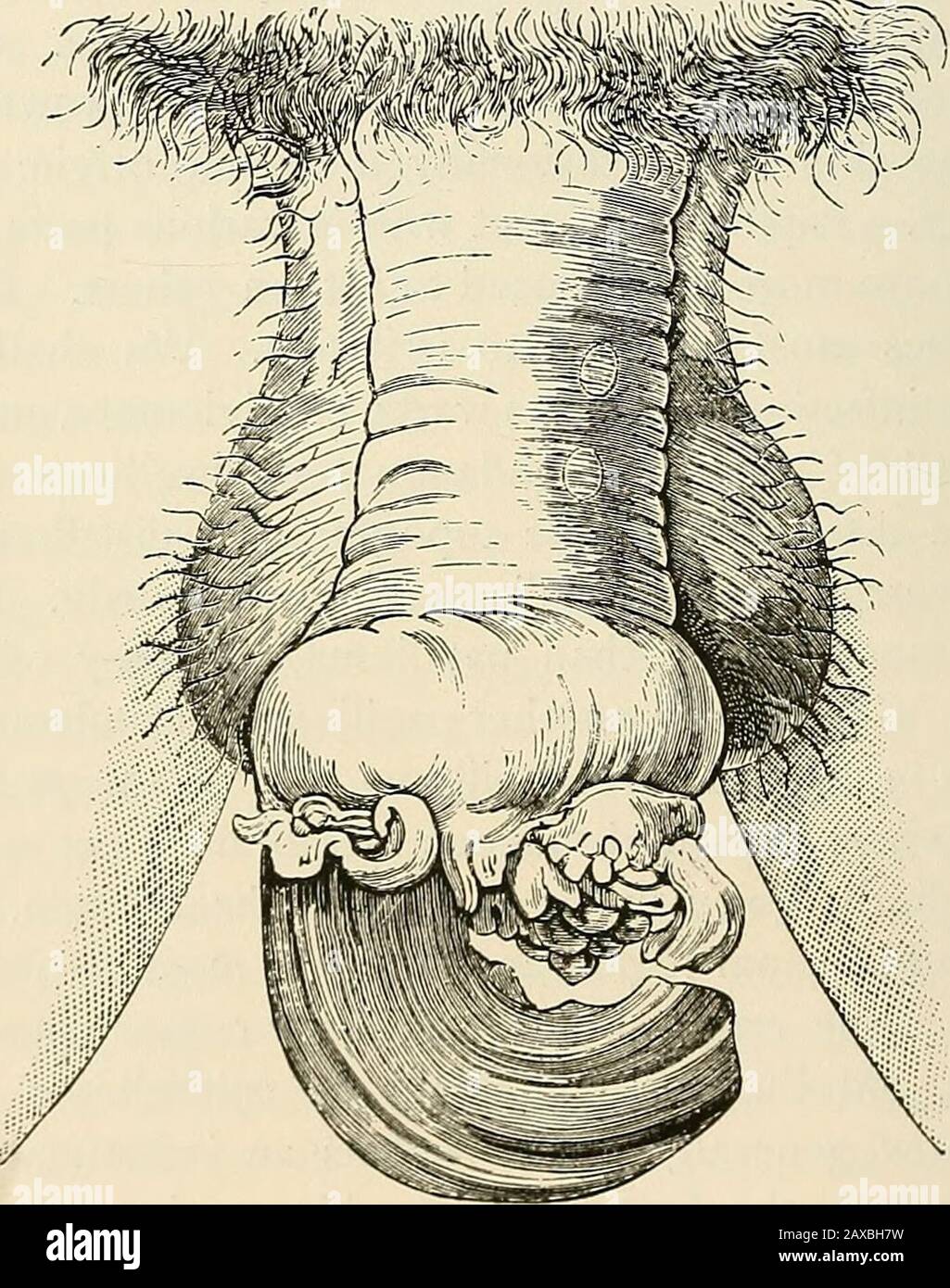The pathology and surgical treatment of tumors . ide distribution,and the more important localities inhabited by them, and the differentclinical varieties, will now be discussed. Skin.—Papilloma of the skin occurs in two principal forms: i.Cornu cutaneum; 2. Fibrous papilloma. In the former variety thetumor is composed almost exclusively of epiblastic tissue; in the latter 142 PATHOLOGY AND TREATMENT OF TUMORS. the connective tissue derived from the mesoblast is present in varyingproportions. Cormi Cutaneum.—The cutaneous horn represents a form of pap-illoma in which the tumor is composed almo

Image details
Contributor:
The Reading Room / Alamy Stock PhotoImage ID:
2AXBH7WFile size:
7.2 MB (505.8 KB Compressed download)Releases:
Model - no | Property - noDo I need a release?Dimensions:
1404 x 1780 px | 23.8 x 30.1 cm | 9.4 x 11.9 inches | 150dpiMore information:
This image is a public domain image, which means either that copyright has expired in the image or the copyright holder has waived their copyright. Alamy charges you a fee for access to the high resolution copy of the image.
This image could have imperfections as it’s either historical or reportage.
The pathology and surgical treatment of tumors . ide distribution, and the more important localities inhabited by them, and the differentclinical varieties, will now be discussed. Skin.—Papilloma of the skin occurs in two principal forms: i.Cornu cutaneum; 2. Fibrous papilloma. In the former variety thetumor is composed almost exclusively of epiblastic tissue; in the latter 142 PATHOLOGY AND TREATMENT OF TUMORS. the connective tissue derived from the mesoblast is present in varyingproportions. Cormi Cutaneum.—The cutaneous horn represents a form of pap-illoma in which the tumor is composed almost exclusively of desic-cated epithelial cells corresponding with the horny layer of the skin.The old cells, instead of becoming desquamated, remain attached tothe tumor-matrix, forming projections varying in length from half aninch to twelve or more inches. Such horns are found most frequentlyon the scalp, temple, forehead, eyelid, nose, lip, cheek, shoulder, arm, elbow, thigh, leg, knee, toe, axilla, thorax, buttock, loin, penis (Fig. 58), . Fig. 58.—Cornu cutaneum of penis (after Pick). and scrotum. The matrix of such tumors is very vascular. Hornytumors of the skin can readily be enucleated, and they seldom returnafter removal. A post-natal matrix for cutaneous horns is furnishedmost frequently by scars. Cruveilhier described a specimen of cornucutaneum which originated from a scar following a burn of the forearm, the tumor reaching such an enormous size that amputation becamenecessary (Fig. 59). The tumors in this case were multiple. That desiccation is not the sole cause in the production and fixationof such an enormous mass of epithelial cells is shown by the fact thatpapillomata of a similar structure are occasionally found in dermoid PAPILLOMA AND ONYCHOMA. 143 and sebaceous cysts. The matrix of a cutaneous horn undoubtedlynot only possesses the inherent capacity of producing epithelial cellsvery rapidly, but also furnishes the cement-substance which fixes theold ep